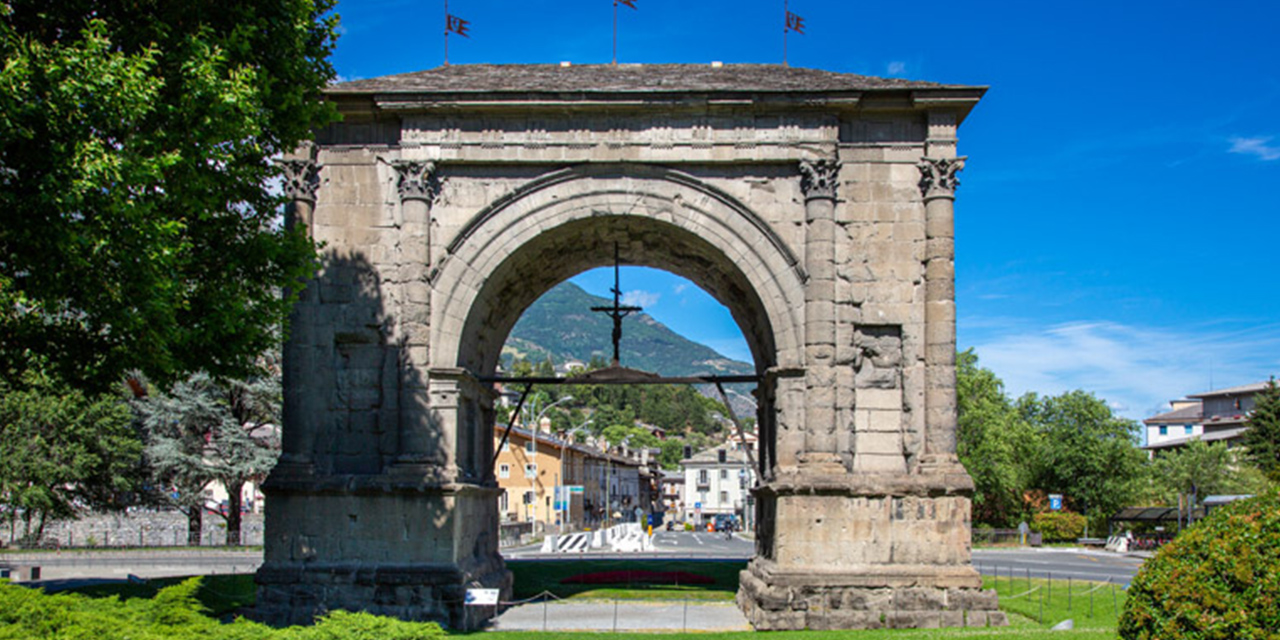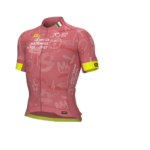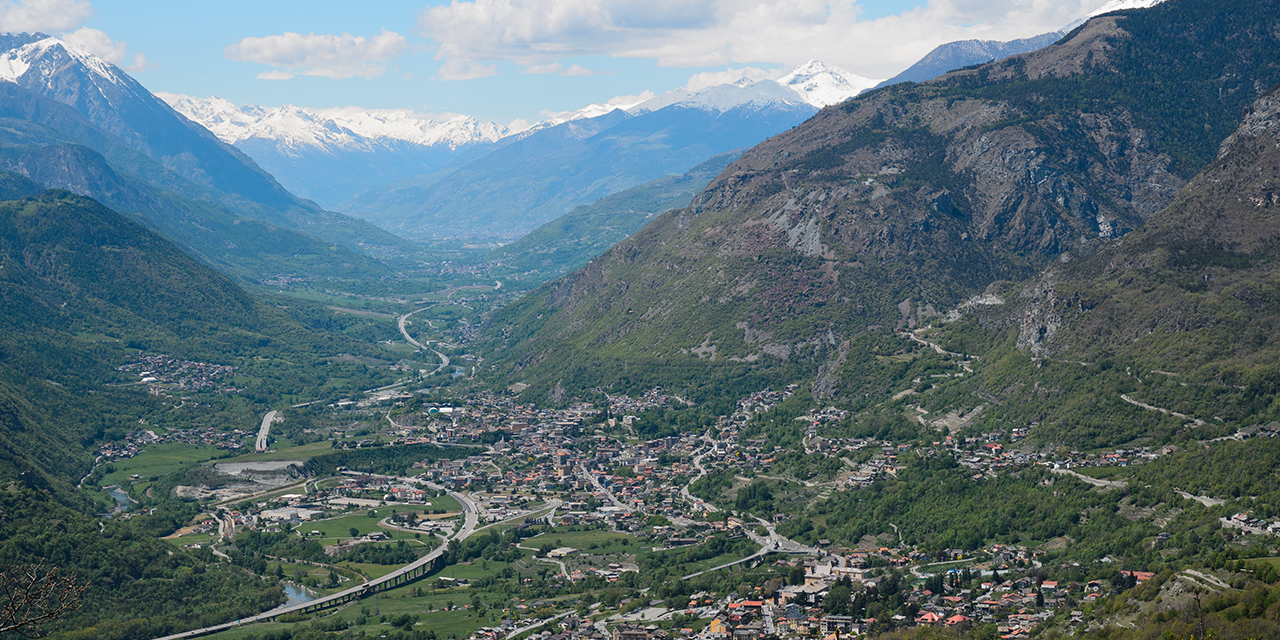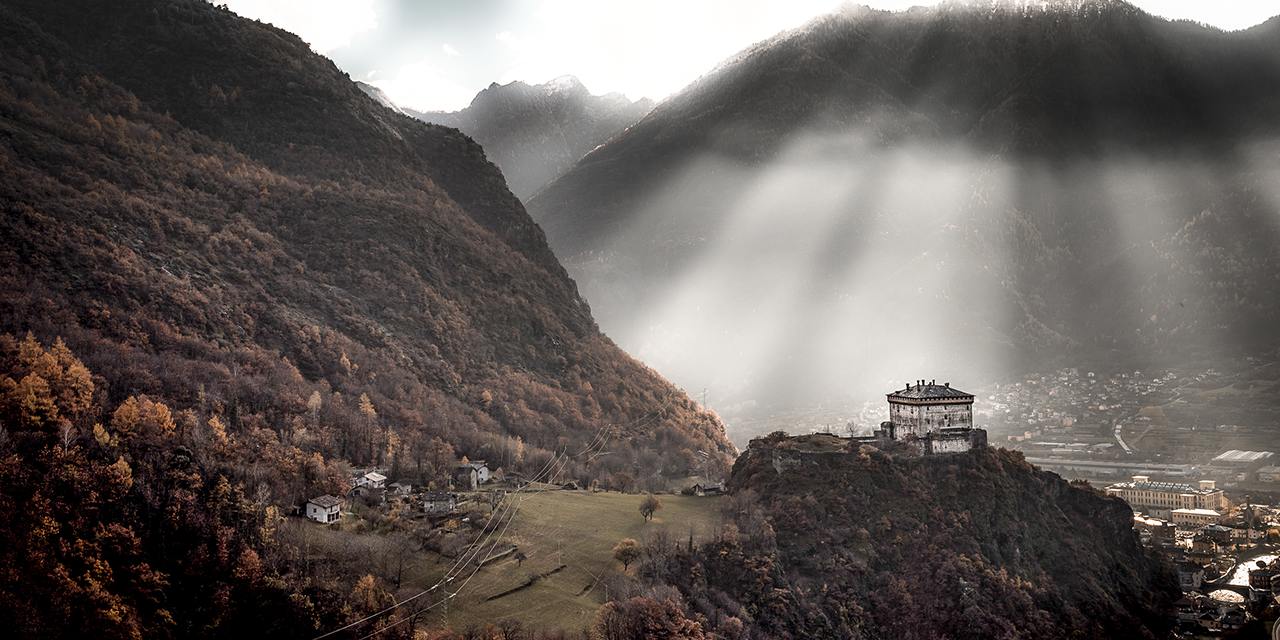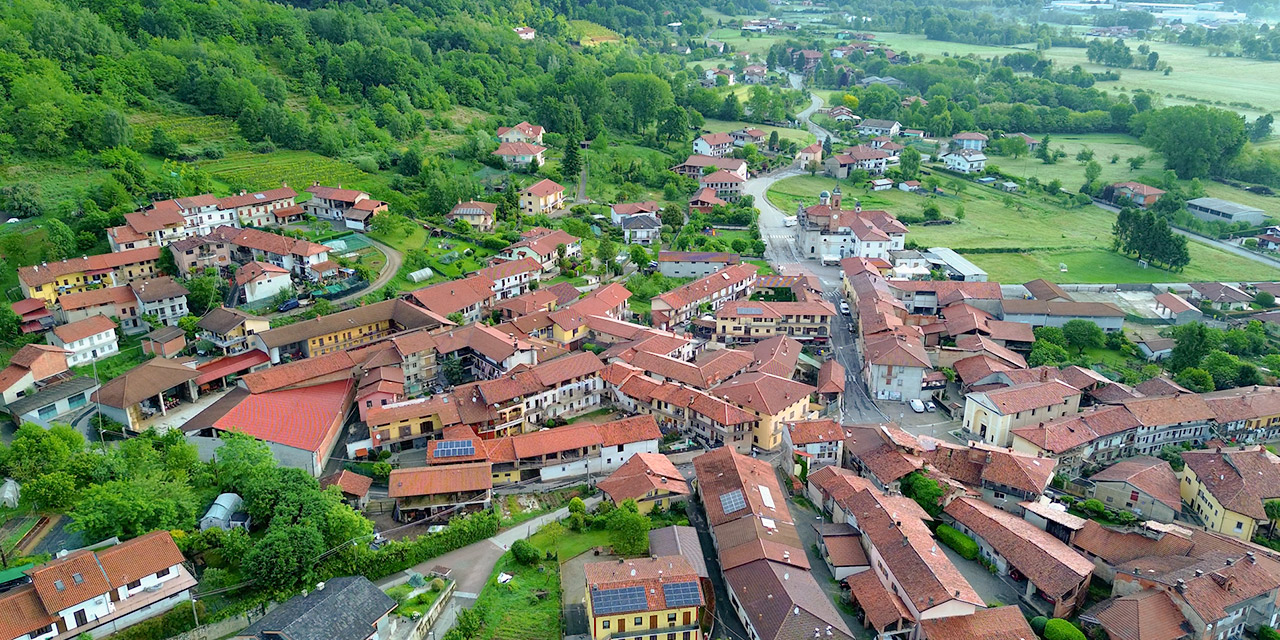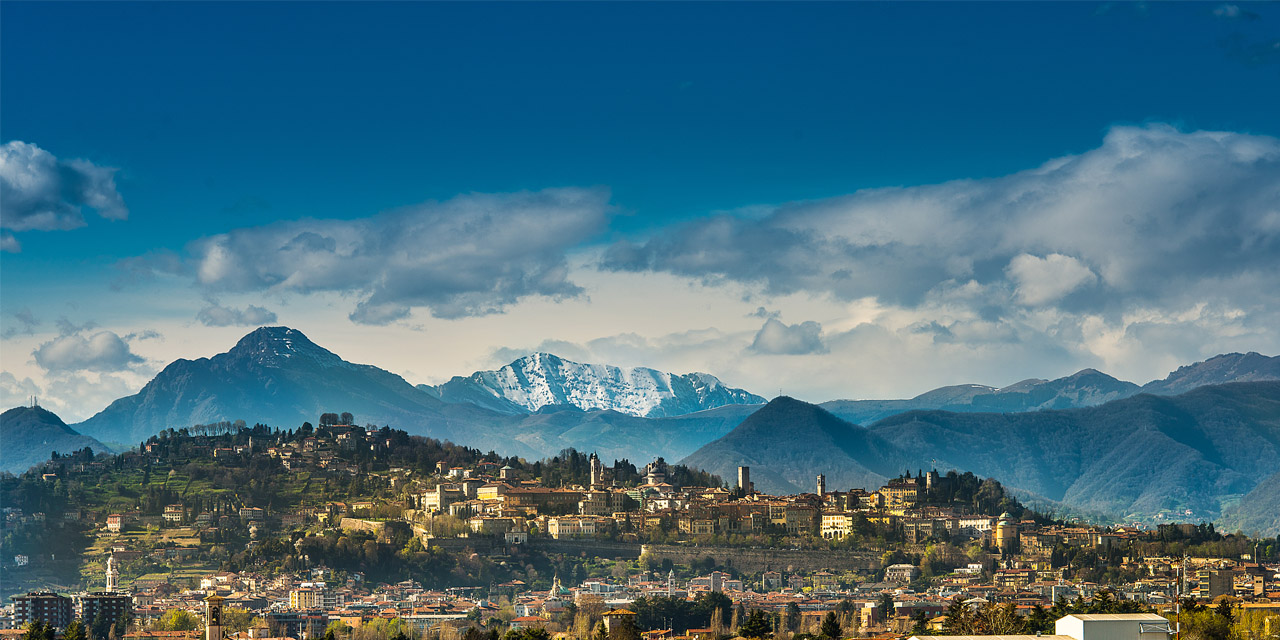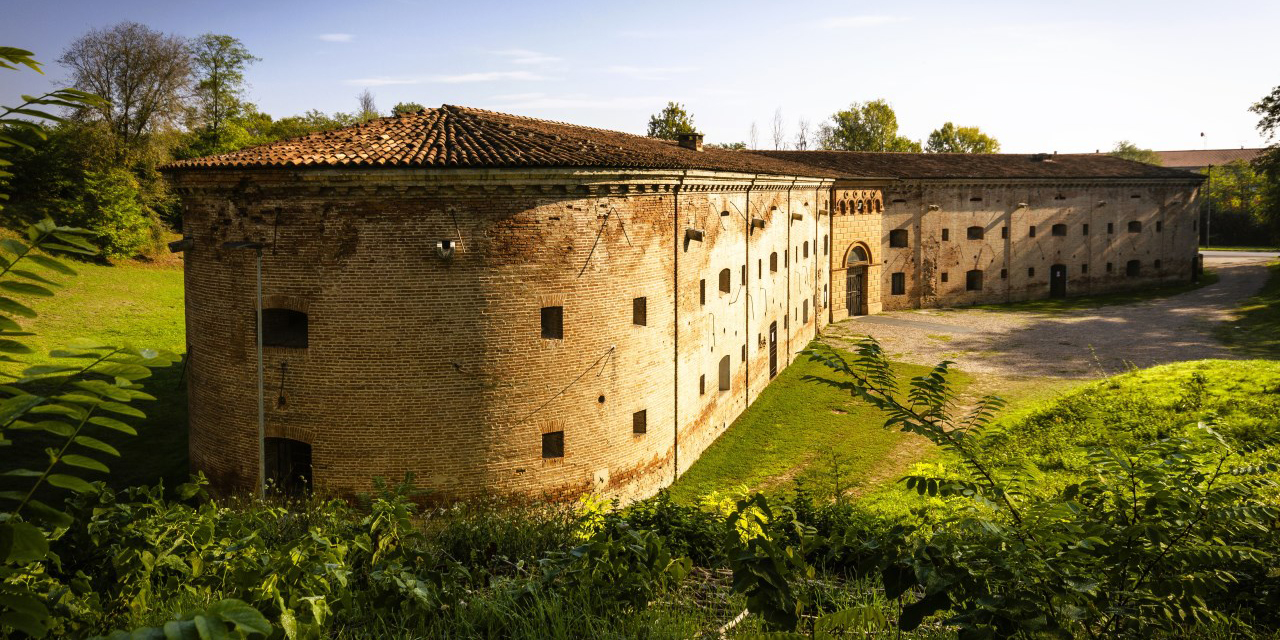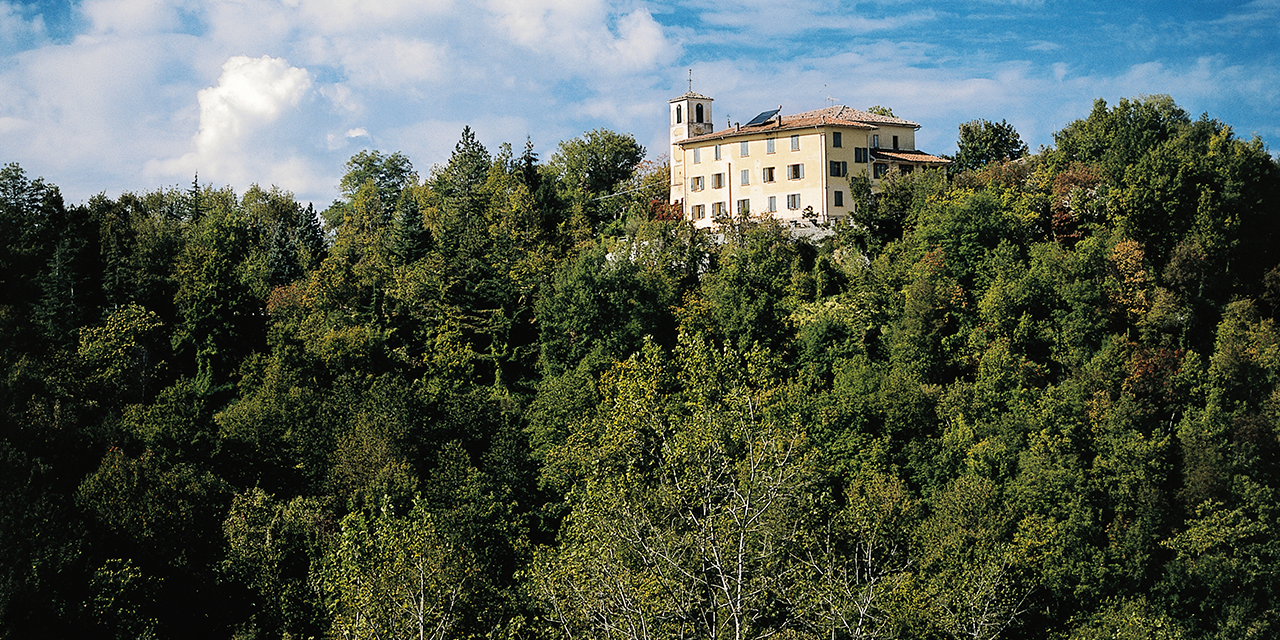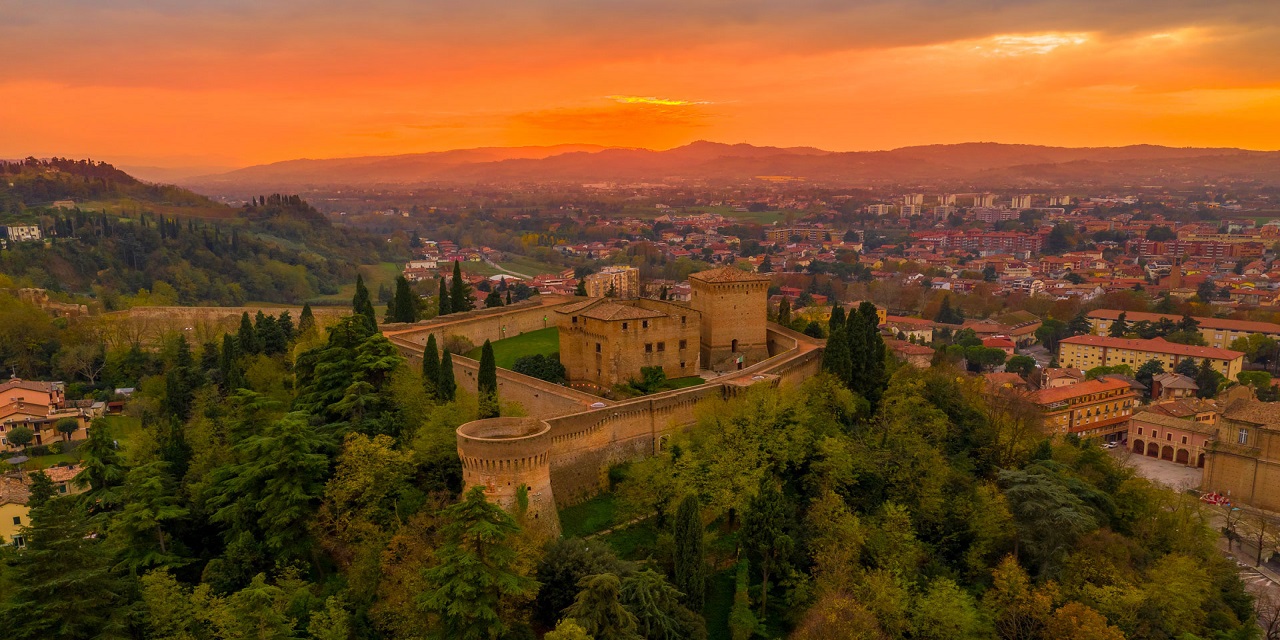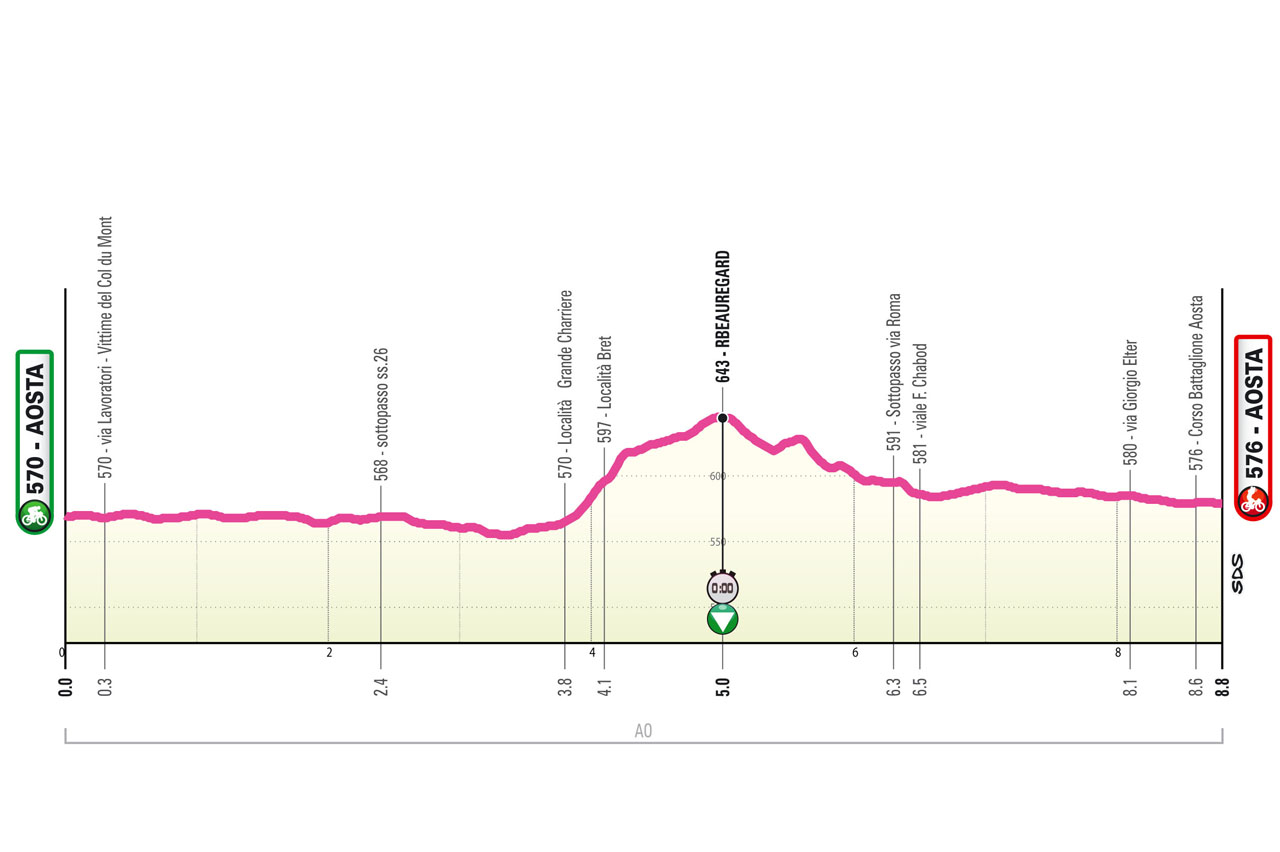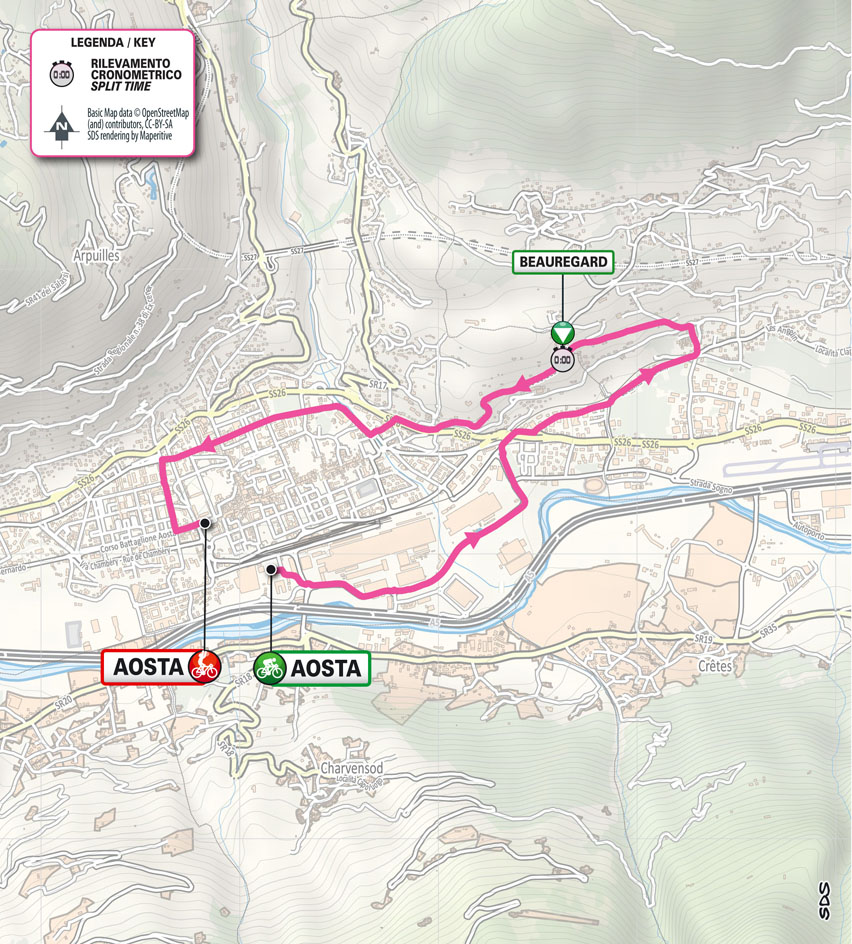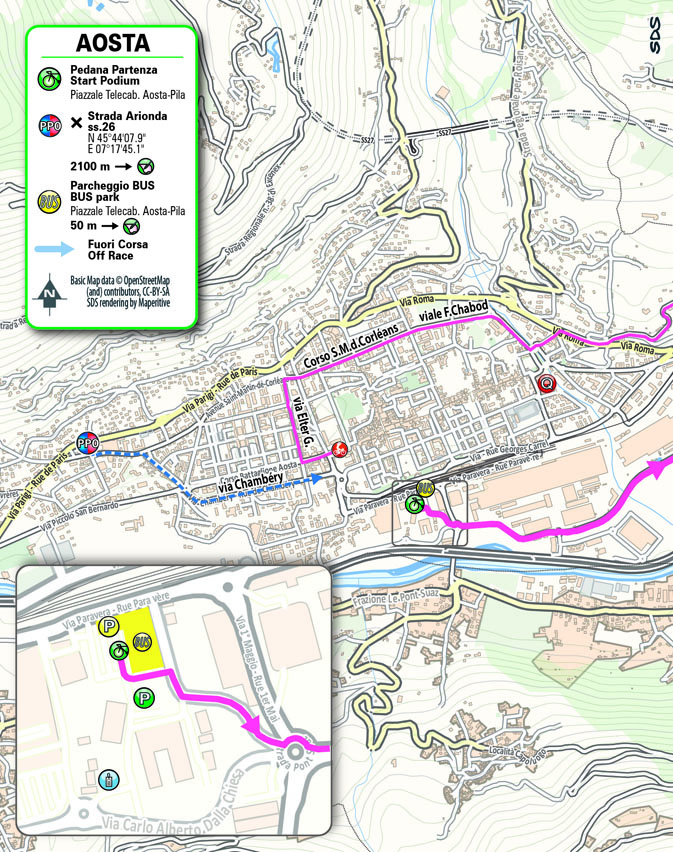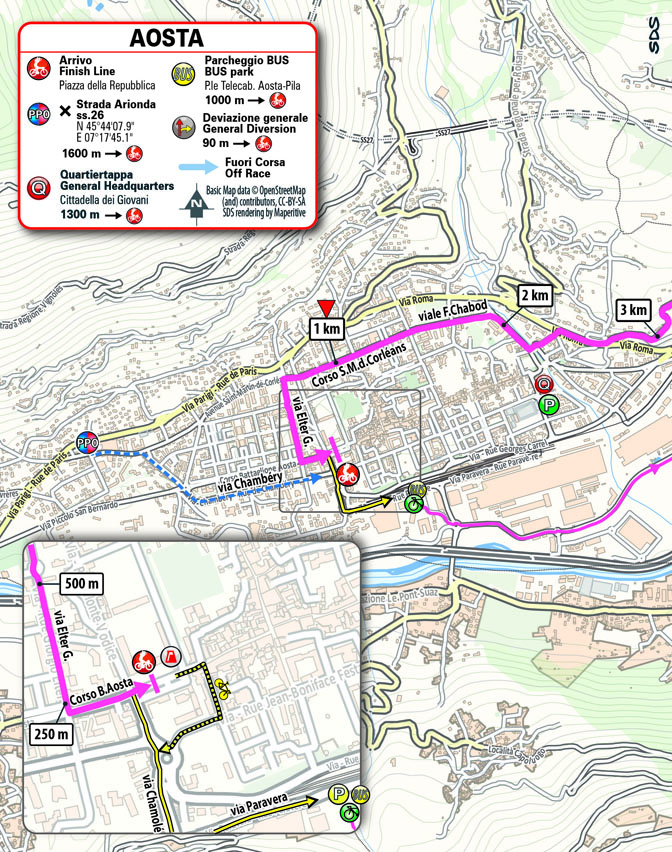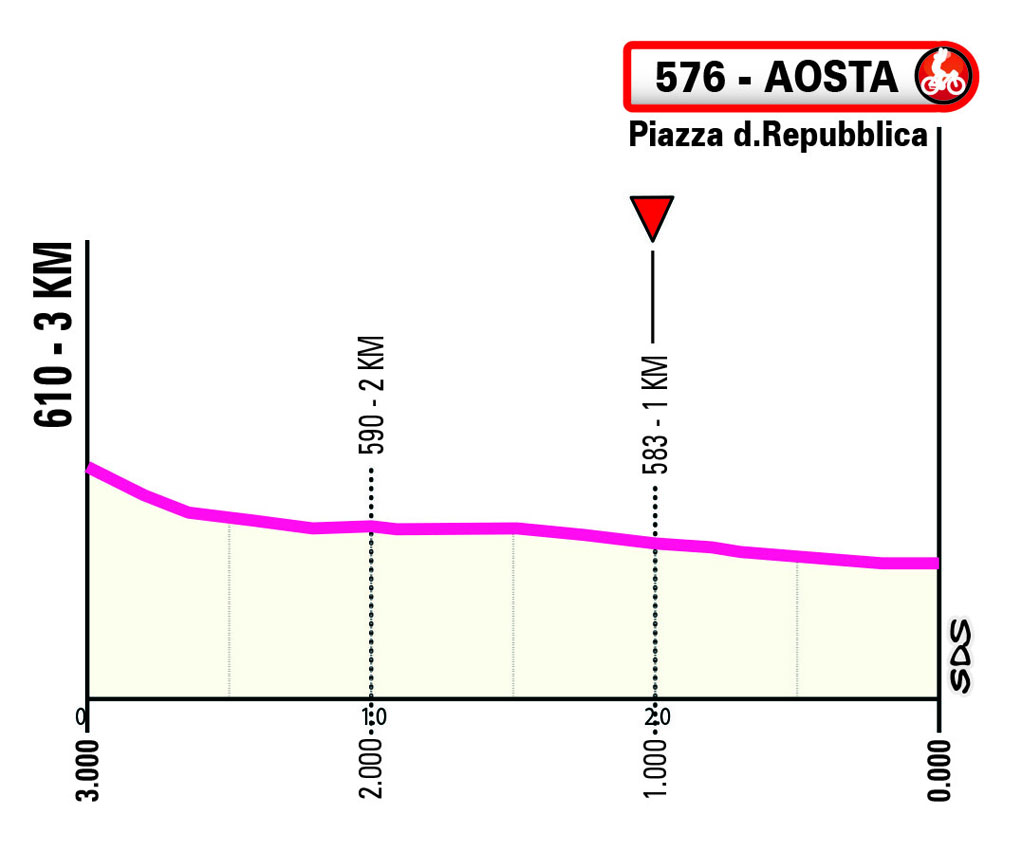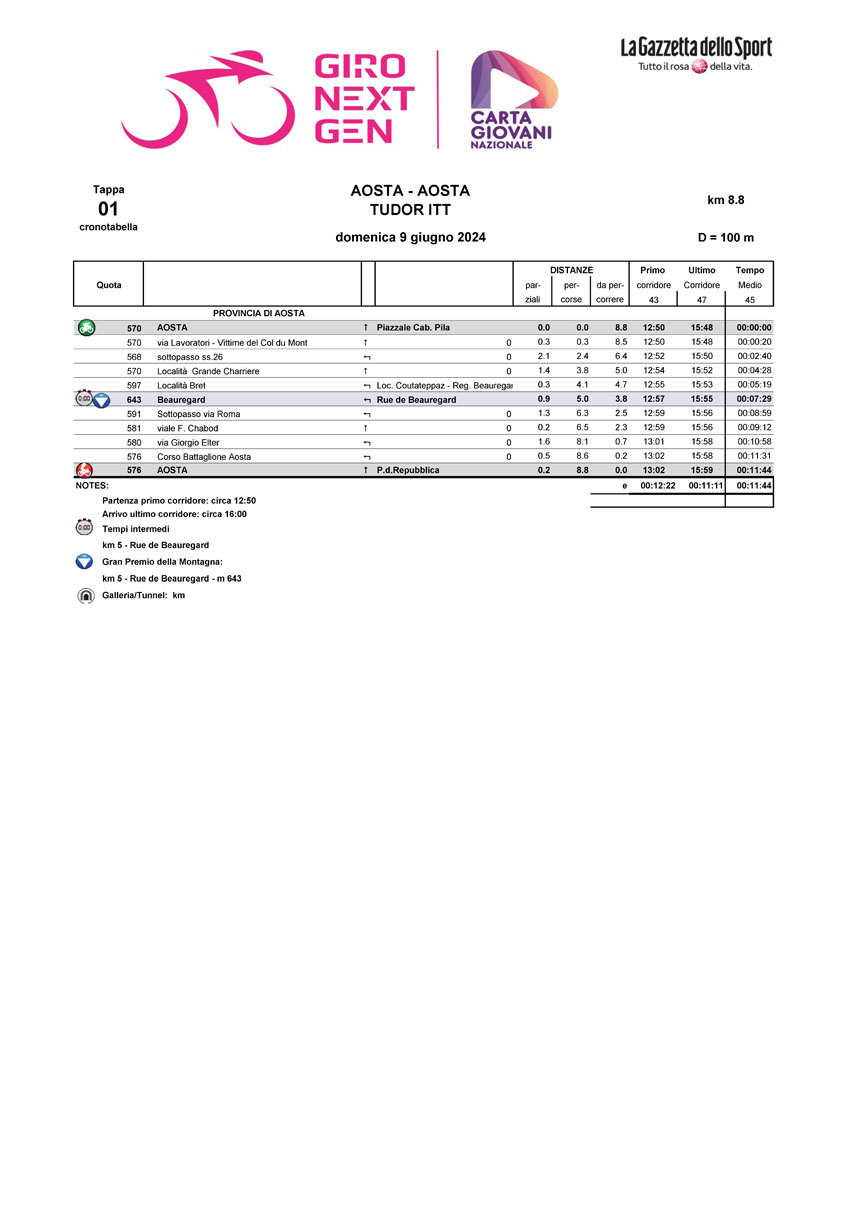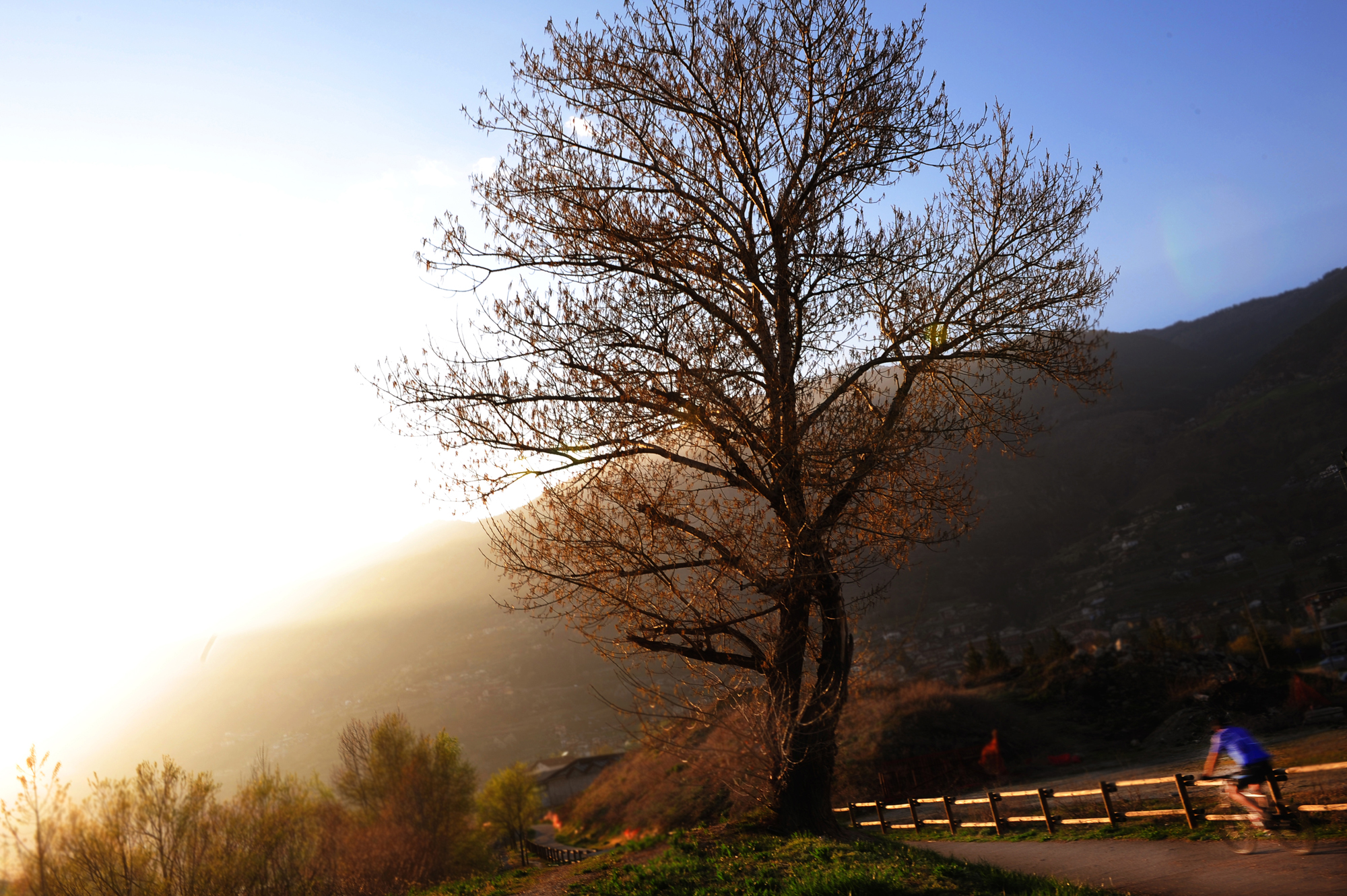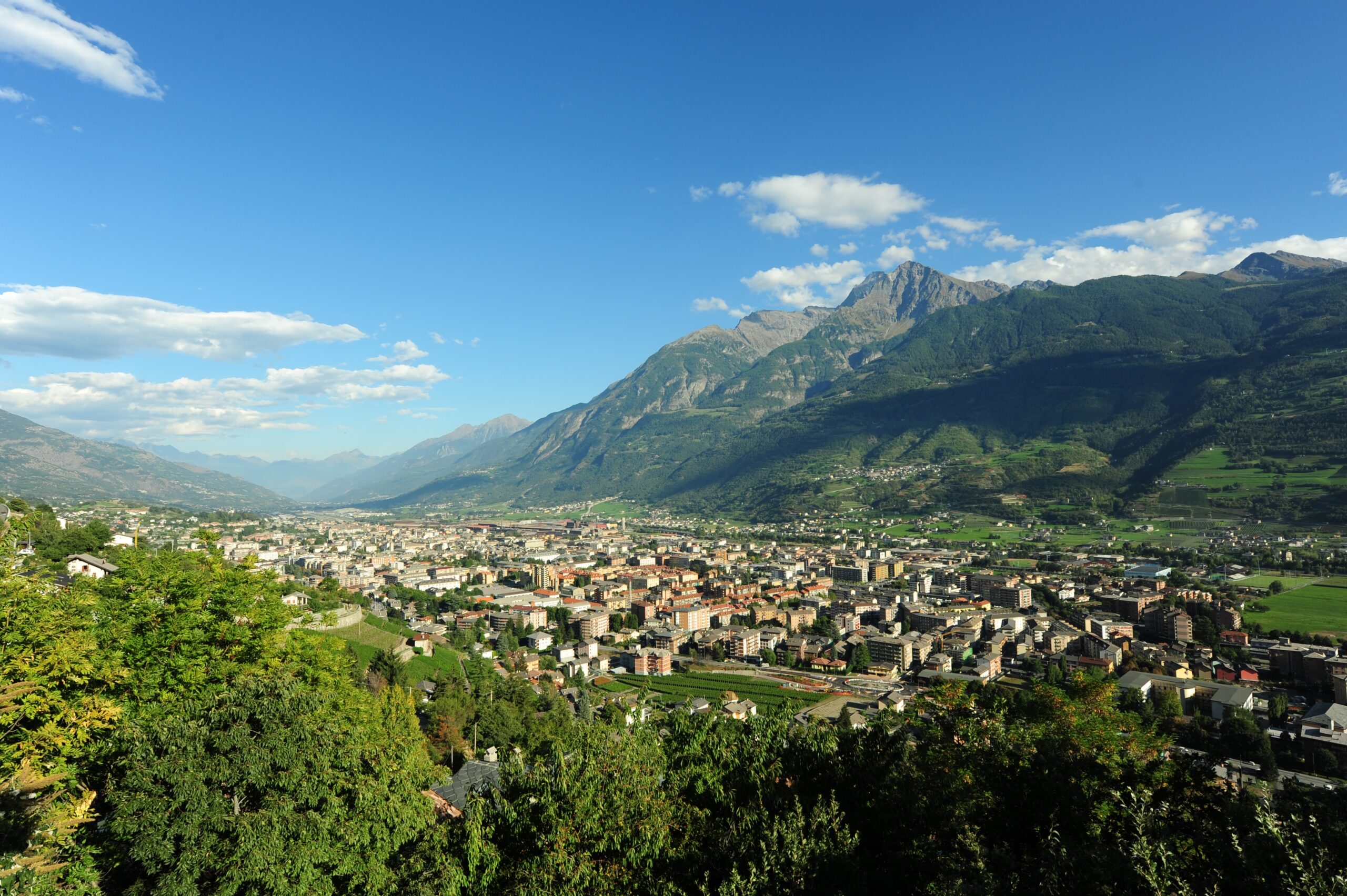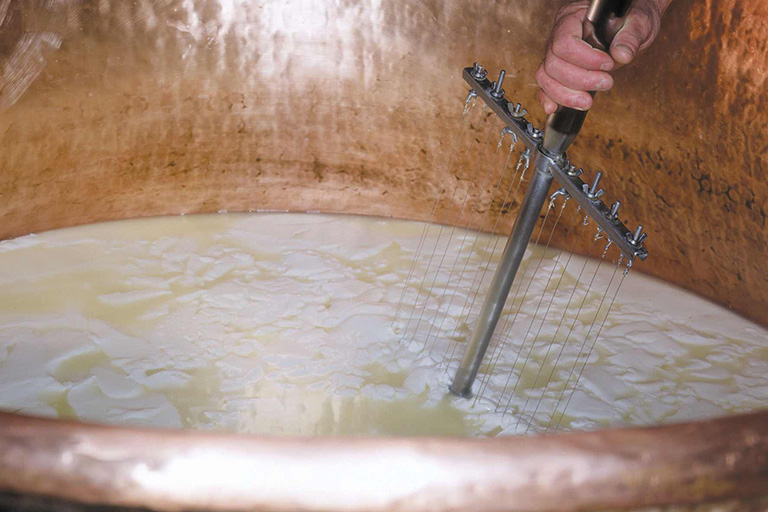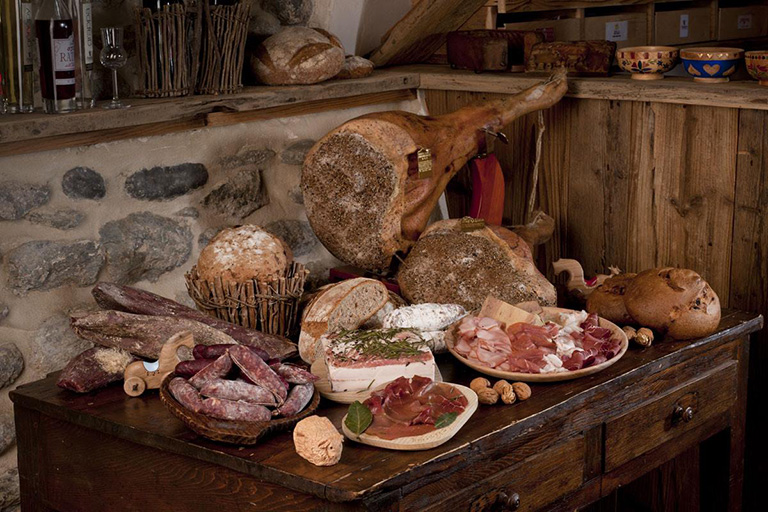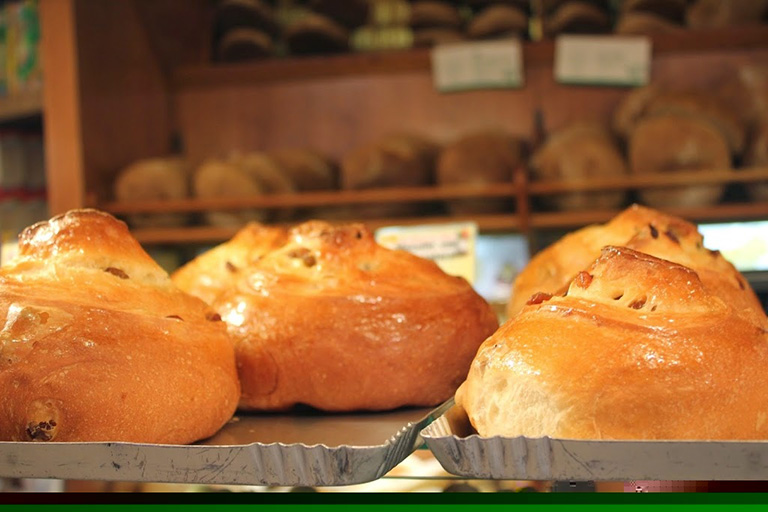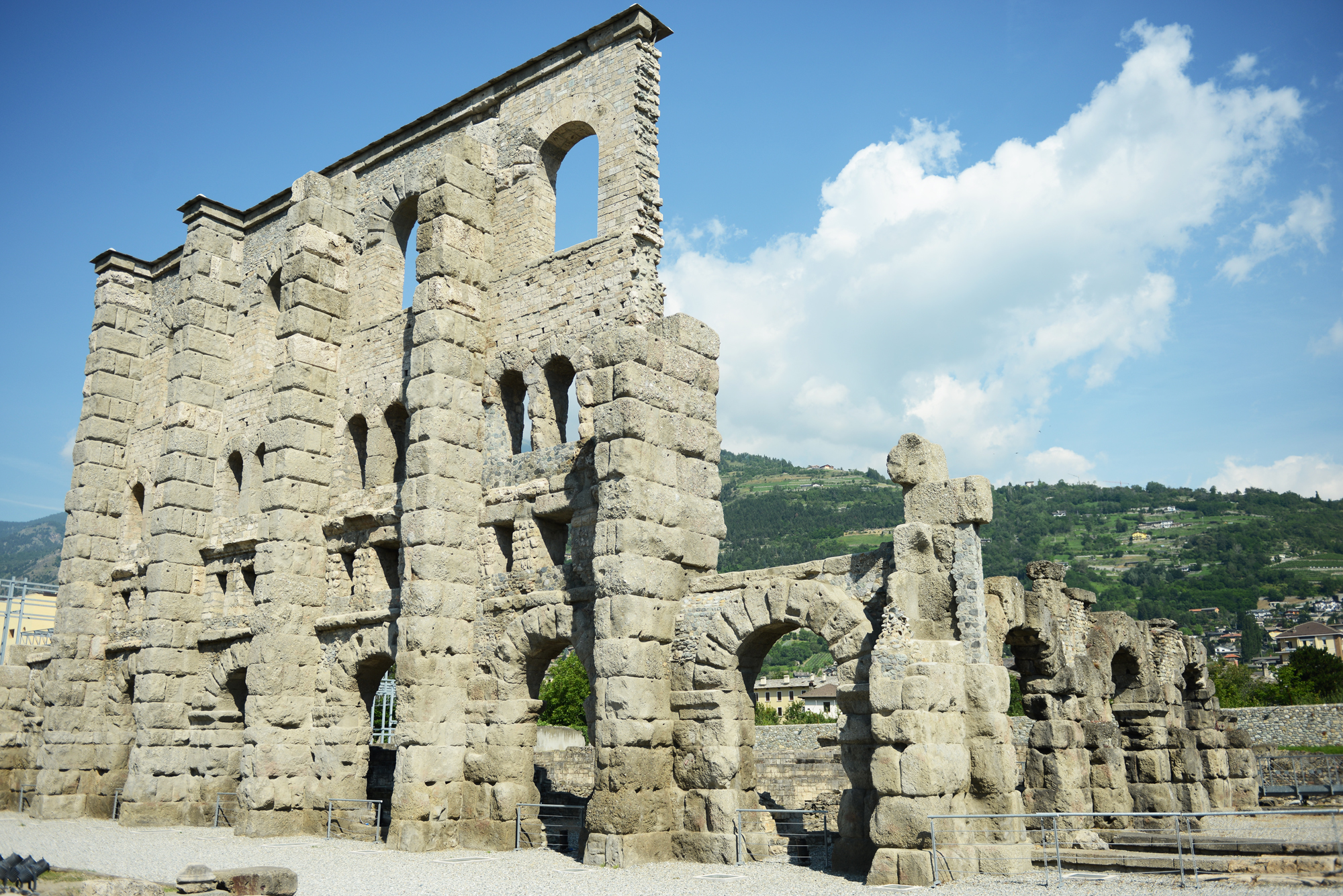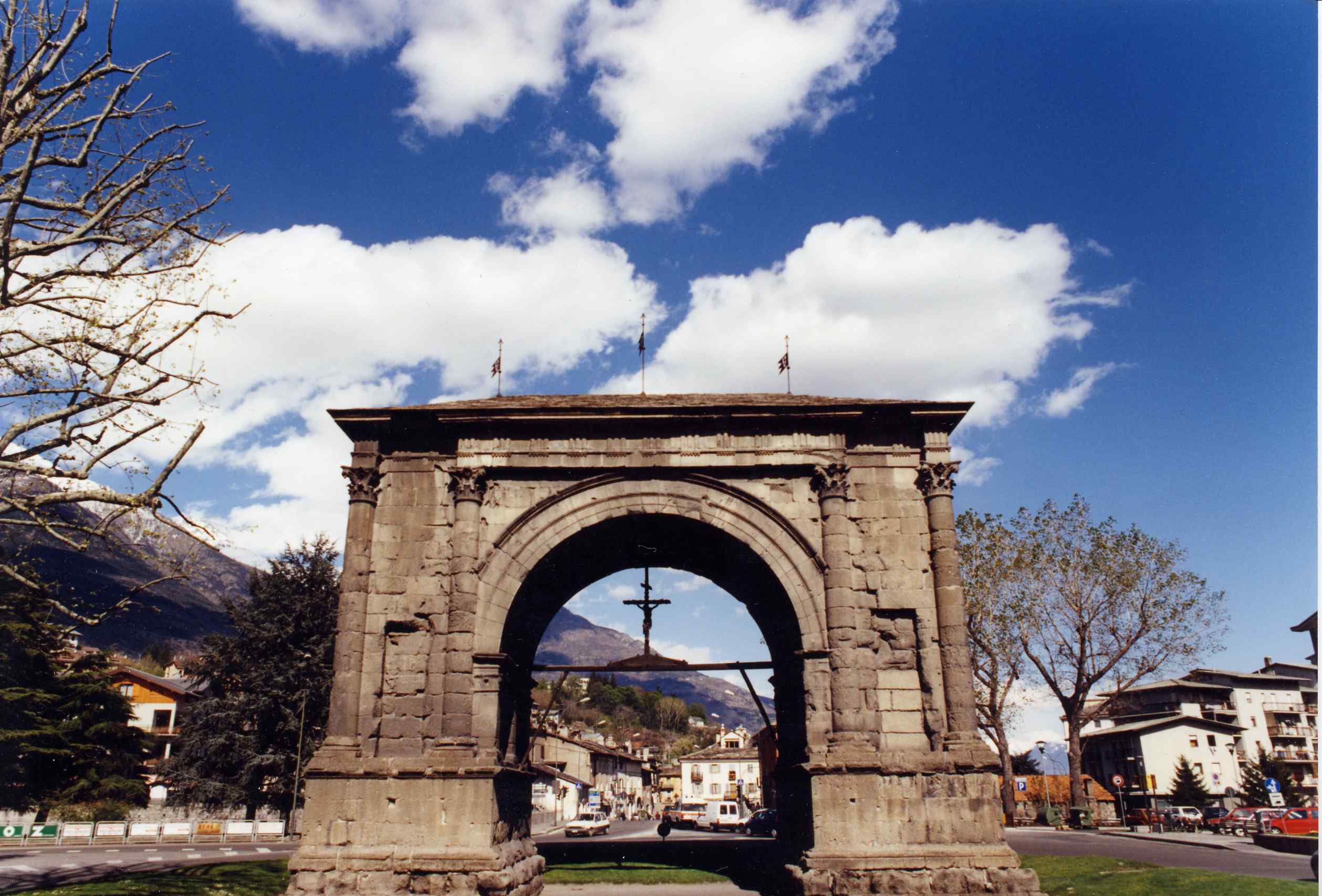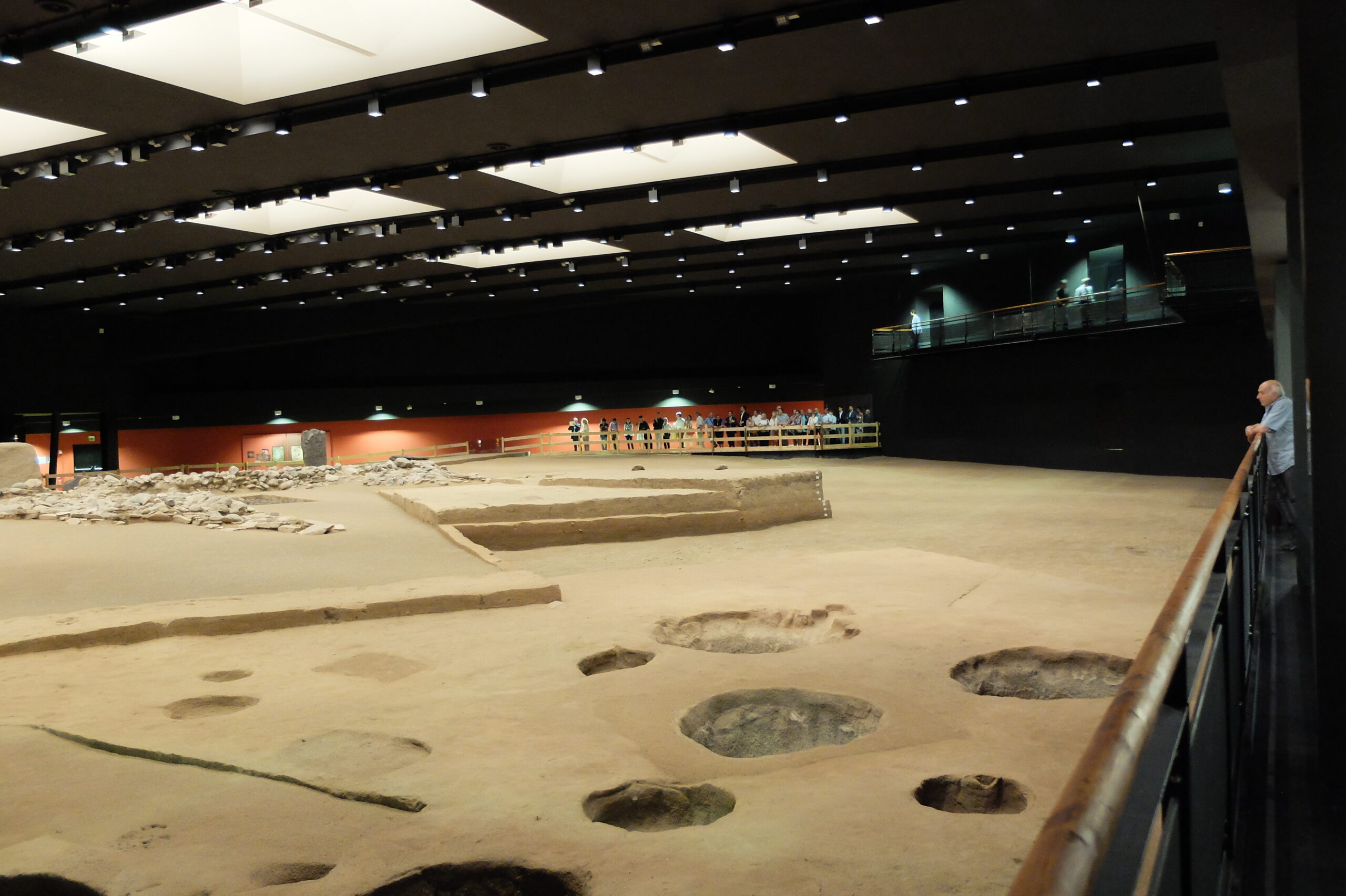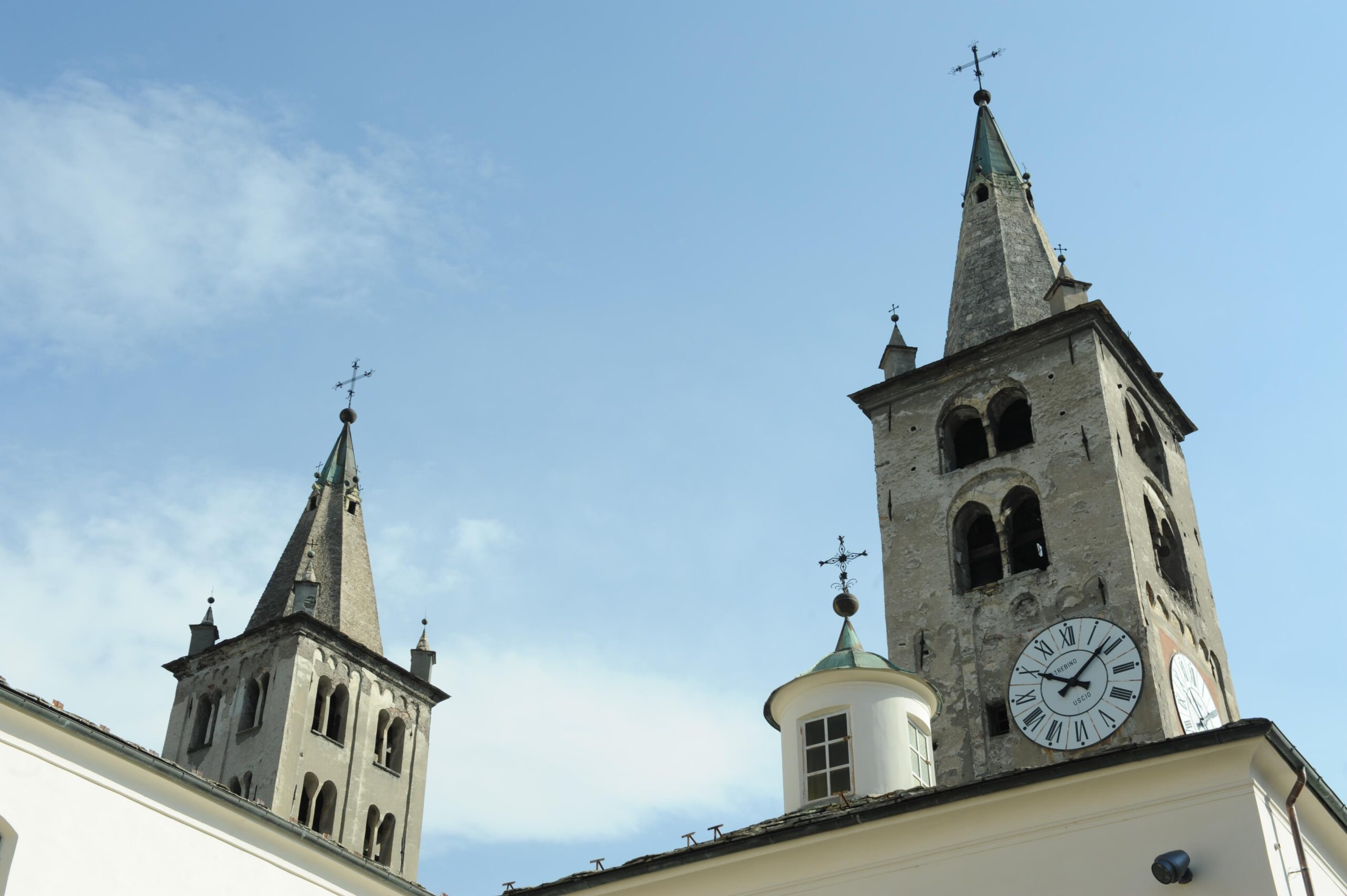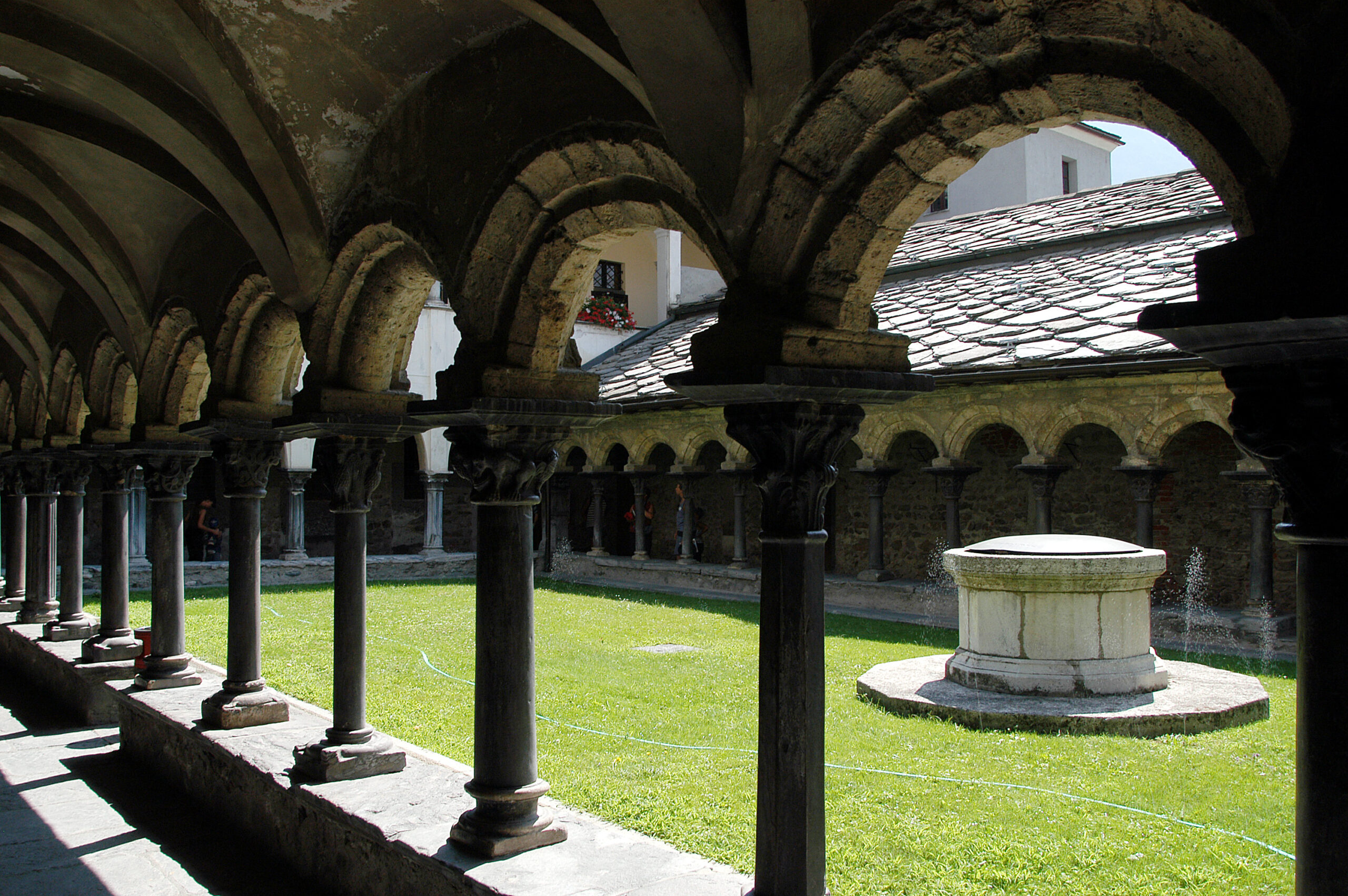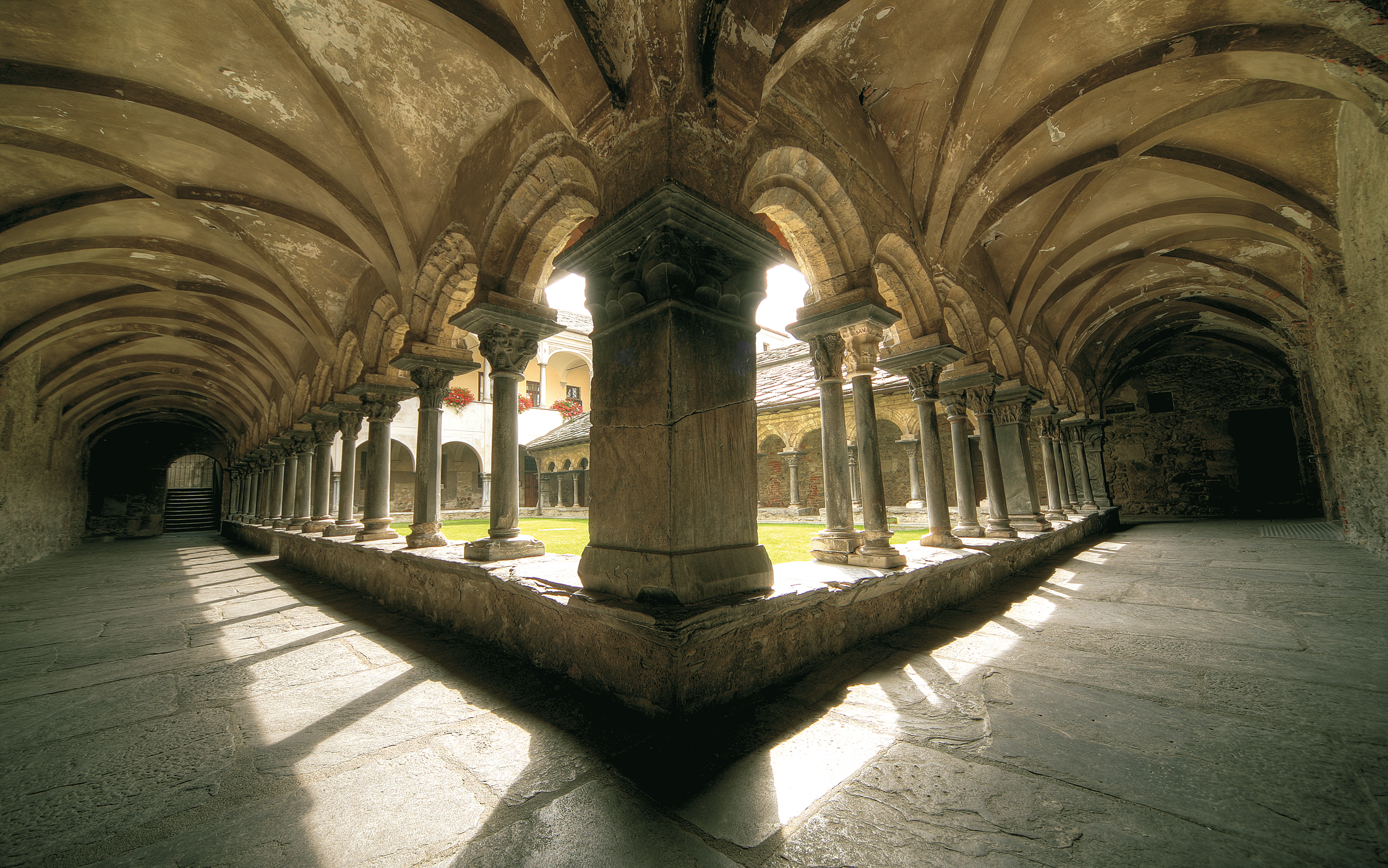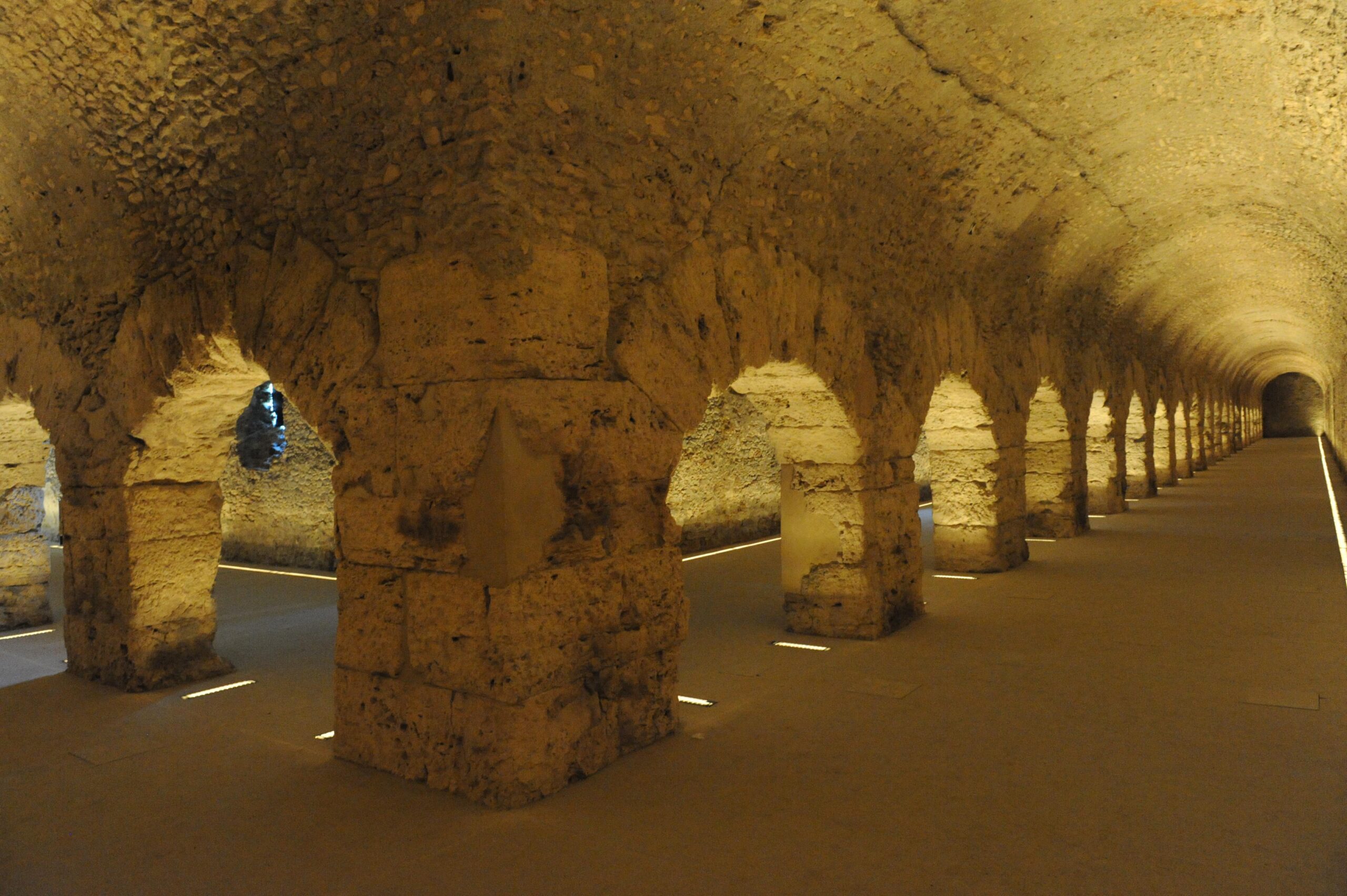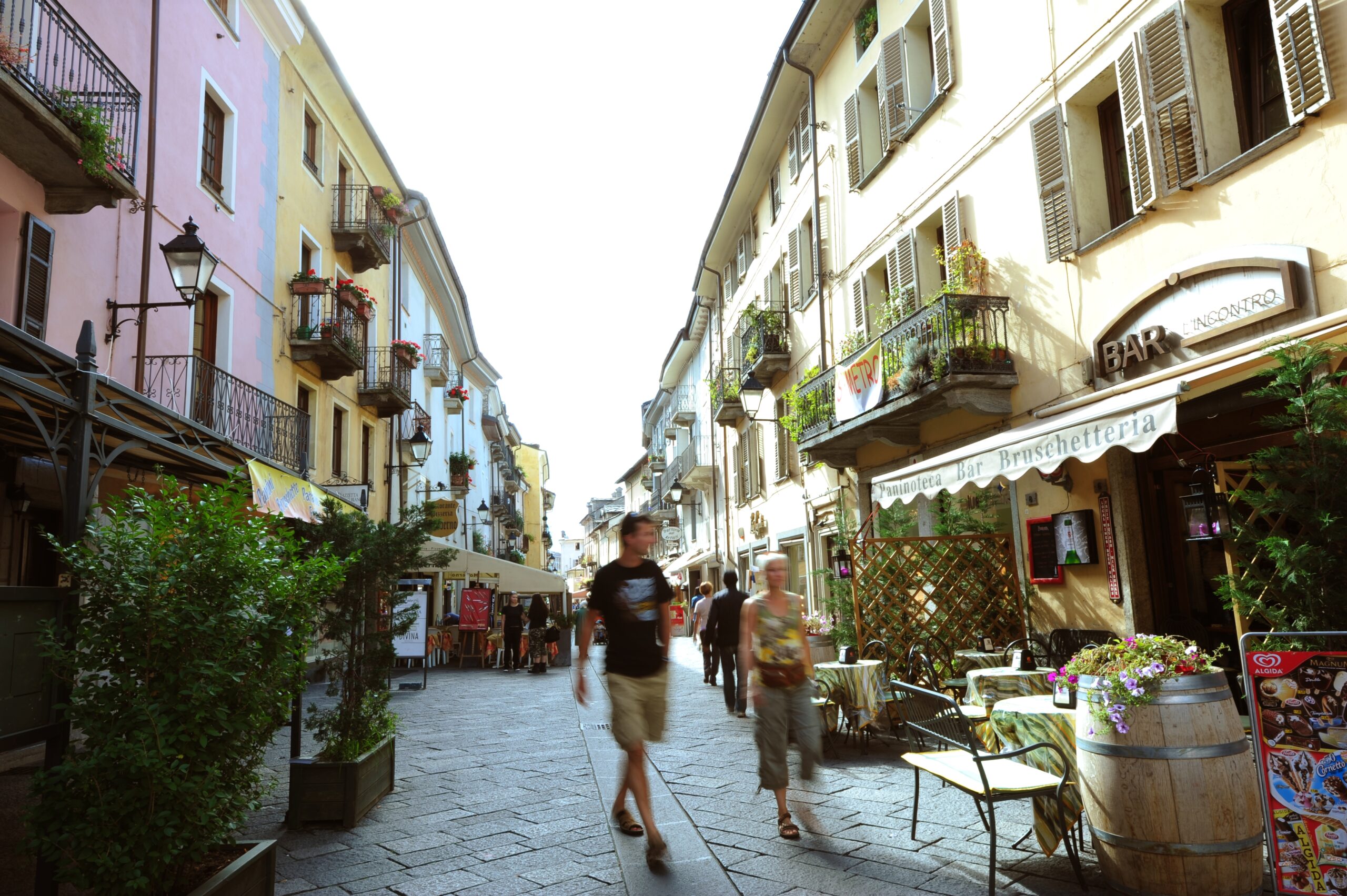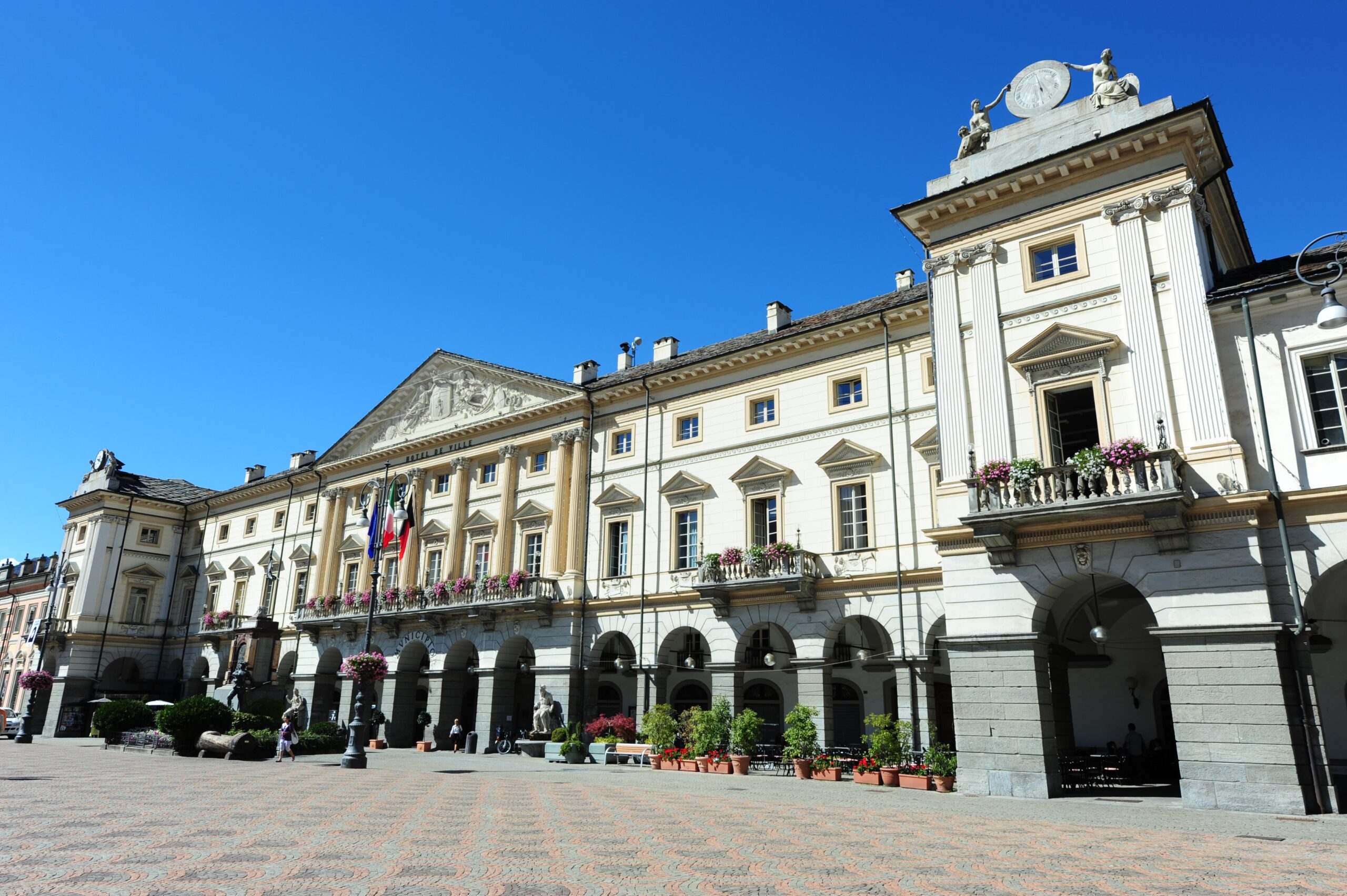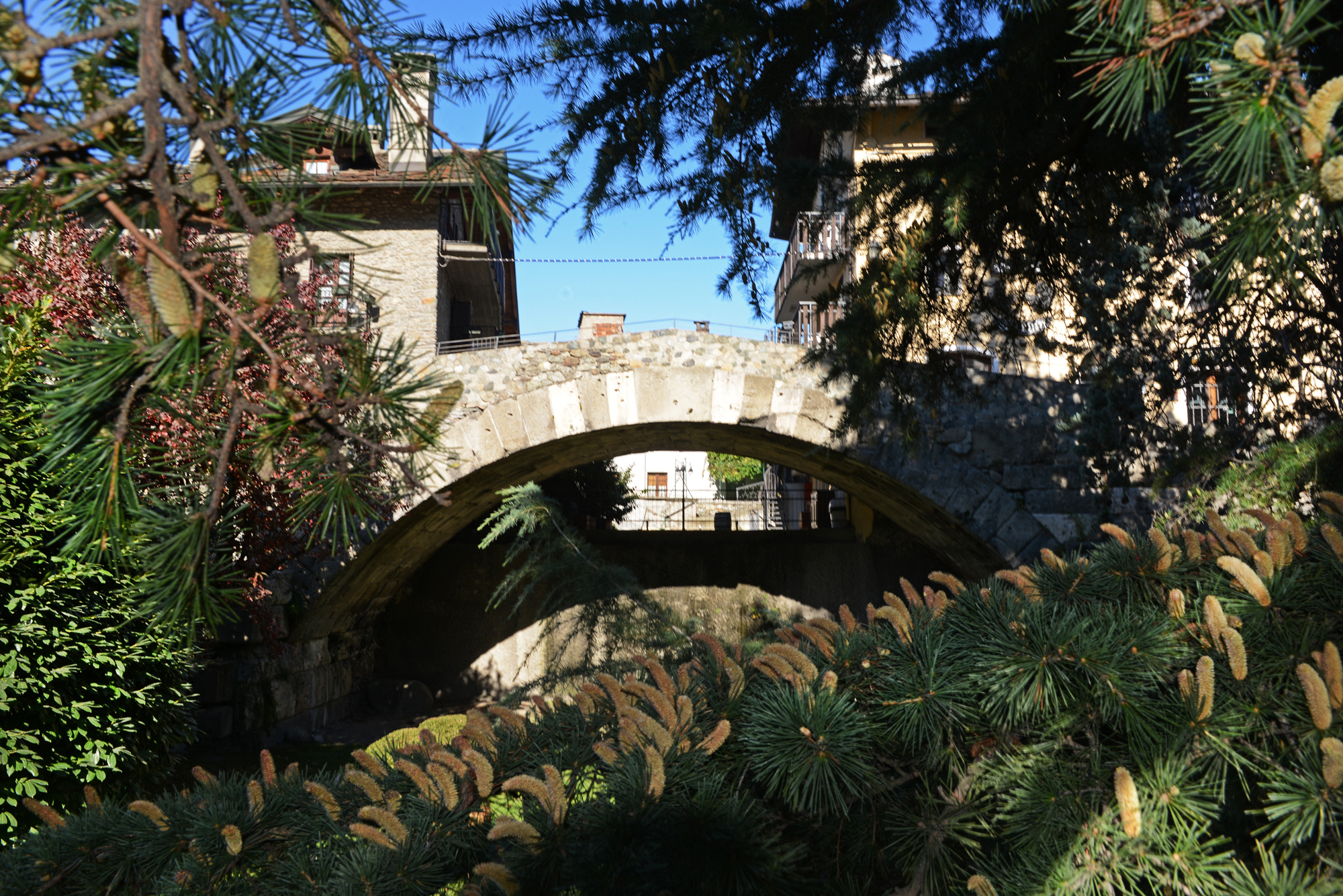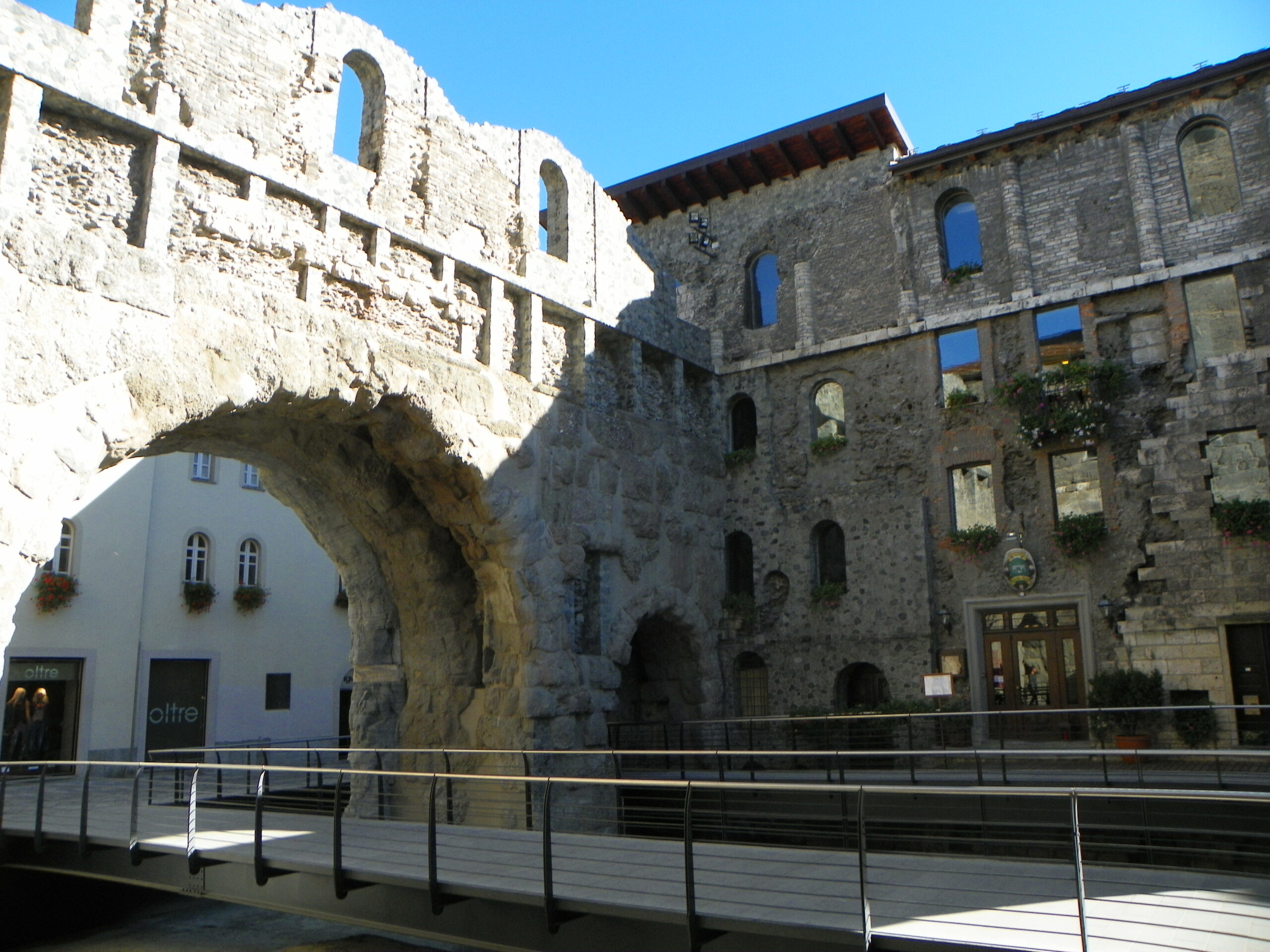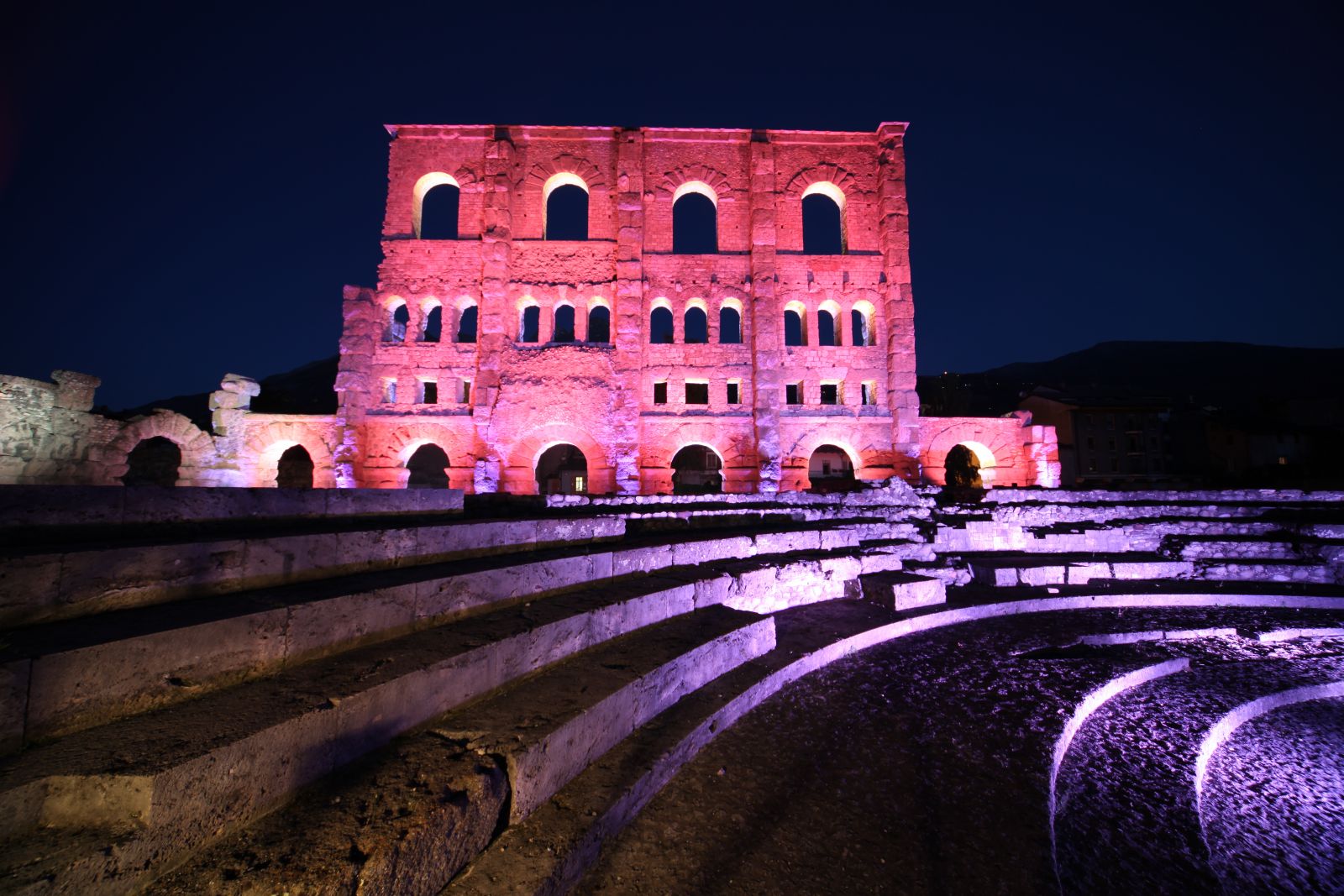scopri di più
info tecniche
altimetria
planimetria
info tecniche
Short individual time trial, very fast in the initial and final sections, but involving a challenging climb in the middle section of just over a kilometre with gradients sometimes higher than 10%. Many changes of direction and some tricky corners until the last 2 km.
Last kilometres
Linear finale with pan-flat last km. The last bend is located 250 m from the finish line.
partenza / arrivo
ultimi km
crono tabella
info turistiche
Città di:
Aosta
Overview
Considered the “Little Rome of the Alps” for the quantity of perfectly preserved Roman buildings, Aosta, the ancient Augusta Praetoria founded in 25 BC. C., has in its historic center a natural itinerary along the Roman axis that presents numerous and impressive monumental attractions.
The city is also home to museums and cultural sites of great importance, as well as precious medieval remains such as the Collegiate Church of Sant’Orso with its wonderful cloister. Streets and squares of the “heart” of the city are characterized by the outdoor areas of clubs and restaurants that in the summer offer the opportunity to learn about the delicacies of the Aosta Valley food and wine immersed in a scenery of beauty, and surrounded by majestic peaks such as Mont Emilius and Becca by Nona.
And for lovers of skiing and nature, a futuristic and suggestive gondola lift just leads directly from the center of the city to the Pila slopes in just 17 minutes.
Food
When you think of the food of Aosta and the mountains that surround it, the first image that comes to mind is probably Fontina. This cheese is the queen of the Aosta Valley’s PDO products – the others being Fromadzo, Jambon de Bosses and Lard d’Arnad – and the star of many traditional dishes, which once had to be both tasty and hearty to overcome the hardships and cold mountain people were faced with.
Aosta Valley cuisine is made up of genuine and tasty products that have their strong point in cheeses and sausages. Among the first, how not to mention the Toma di Gressoney, the Bleu d’Aoste, blue cheese with an unmistakable taste, and goat cheeses, and again the Reblec and Salignon. Among the meat products Boudin, Saouseusse, Motzetta and Teuteun produced from bovine udders.
And again honeys (mountain wildflower, light rhododendron honey and chestnut honey), sweets such as the famous tiles, bread-making products, including savory and tasty rye bread or Mecoulin, the “ancestor” of panettone .
Fontina PDO is the key ingredient in polenta concia, i.e. with cheese and a lot of butter, tasty on its own but excellent with game meat dishes or carbonara, a kind of beef stew cooked in wine, which is very tasty.
Crespelle alla valdostana also have Fontina as one of their main ingredients: these crêpes, also filled with cooked ham and covered with béchamel sauce and baked au gratin in the oven to make them crispy on the outside and soft and creamy on the inside.
Also very famous is the cotoletta alla valdostana, a cutlet also with Fontina cheese and cooked ham, best grilled Sant-Oyen-style.
Among the specialities with Fontina we also find seupa à la Vapelenentse, a recipe originating from the nearby Valpelline, with De.C.O local speciality certification. It consists of layers of stale bread, Fontina and broth. In the traditional recipe, the broth is made from Savoy cabbage, but meat broth is also used. The layers are just white bread and Fontina cheese. Some variants use black bread, wholemeal bread or rye bread, and cabbage leaves, with lashings of melted butter.
Wines and Beverage
A small Alpine region that boasts a highly respected tradition in the oenological field: it is the secret of “heroic” mountain viticulture with steeply sloping terraced vineyards that require hard work but which has allowed, especially in recent years, the rediscovery and promotion of a heritage of indigenous vines of great value.
These are Prié Blanc (the only white grape), Bonda, Cornalin, Crovassa, Fumin, Mayolet, Ner d’Ala, Neyret, Petit Rouge, Premetta, Roussin, Vien de Nus and Vuillermin.
The Aosta area is one of those in which Torrette, the main and renowned red wine from Valle d’Aosta vinified with a prevalent base of Petit Rouge, finds its maximum expression, but renowned wines, produced from native and international grapes, are also Chardonnay, Nus Malvoisie, Petite Arvine, a traditional late ripening grape, Syrah, Gamay, Pinot Noir and Petit rouge.
The Valle d’Aosta Wine Consortium was recently created, which gathers 42 companies representing 90% of the territory. Its purpose is to promote and protect the Aosta Valley DOC wines.
Grappa is of great importance in the Aosta Valley, which can be white, aged in oak barrels, or flavored with herbs, fruits, honey and spices. Of particular interest are the single-variety distillates, obtained with the indigenous varieties of the region.
Genepì deserves a separate mention – a refined liqueur that comes from a small aromatic plant that grows above 2000 meters of altitude of the Artemisia genus – an excellent digestive that “tastes of the mountains”.
“Valle d’Aosta coffee” is enriched with grappa, genepì and spices and should be drunk in a special cup called “Friendship Cup”. The name derives from the way in which the preparation is consumed through the particular cup with a variable number of spouts, drinking “à la ronde”, that is, by passing the wooden artifact from hand to hand among the diners, avoiding placing it on the table until it reaches which is not over, on pain of the end of the friendship.
Aosta
Overview
Considered the “Little Rome of the Alps” for the quantity of perfectly preserved Roman buildings, Aosta, the ancient Augusta Praetoria founded in 25 BC. C., has in its historic center a natural itinerary along the Roman axis that presents numerous and impressive monumental attractions.
The city is also home to museums and cultural sites of great importance, as well as precious medieval remains such as the Collegiate Church of Sant’Orso with its wonderful cloister. Streets and squares of the “heart” of the city are characterized by the outdoor areas of clubs and restaurants that in the summer offer the opportunity to learn about the delicacies of the Aosta Valley food and wine immersed in a scenery of beauty, and surrounded by majestic peaks such as Mont Emilius and Becca by Nona.
And for lovers of skiing and nature, a futuristic and suggestive gondola lift just leads directly from the center of the city to the Pila slopes in just 17 minutes.
Food
When you think of the food of Aosta and the mountains that surround it, the first image that comes to mind is probably Fontina. This cheese is the queen of the Aosta Valley’s PDO products – the others being Fromadzo, Jambon de Bosses and Lard d’Arnad – and the star of many traditional dishes, which once had to be both tasty and hearty to overcome the hardships and cold mountain people were faced with.
Aosta Valley cuisine is made up of genuine and tasty products that have their strong point in cheeses and sausages. Among the first, how not to mention the Toma di Gressoney, the Bleu d’Aoste, blue cheese with an unmistakable taste, and goat cheeses, and again the Reblec and Salignon. Among the meat products Boudin, Saouseusse, Motzetta and Teuteun produced from bovine udders.
And again honeys (mountain wildflower, light rhododendron honey and chestnut honey), sweets such as the famous tiles, bread-making products, including savory and tasty rye bread or Mecoulin, the “ancestor” of panettone .
Fontina PDO is the key ingredient in polenta concia, i.e. with cheese and a lot of butter, tasty on its own but excellent with game meat dishes or carbonara, a kind of beef stew cooked in wine, which is very tasty.
Crespelle alla valdostana also have Fontina as one of their main ingredients: these crêpes, also filled with cooked ham and covered with béchamel sauce and baked au gratin in the oven to make them crispy on the outside and soft and creamy on the inside.
Also very famous is the cotoletta alla valdostana, a cutlet also with Fontina cheese and cooked ham, best grilled Sant-Oyen-style.
Among the specialities with Fontina we also find seupa à la Vapelenentse, a recipe originating from the nearby Valpelline, with De.C.O local speciality certification. It consists of layers of stale bread, Fontina and broth. In the traditional recipe, the broth is made from Savoy cabbage, but meat broth is also used. The layers are just white bread and Fontina cheese. Some variants use black bread, wholemeal bread or rye bread, and cabbage leaves, with lashings of melted butter.
Wines and Beverage
A small Alpine region that boasts a highly respected tradition in the oenological field: it is the secret of “heroic” mountain viticulture with steeply sloping terraced vineyards that require hard work but which has allowed, especially in recent years, the rediscovery and promotion of a heritage of indigenous vines of great value.
These are Prié Blanc (the only white grape), Bonda, Cornalin, Crovassa, Fumin, Mayolet, Ner d’Ala, Neyret, Petit Rouge, Premetta, Roussin, Vien de Nus and Vuillermin.
The Aosta area is one of those in which Torrette, the main and renowned red wine from Valle d’Aosta vinified with a prevalent base of Petit Rouge, finds its maximum expression, but renowned wines, produced from native and international grapes, are also Chardonnay, Nus Malvoisie, Petite Arvine, a traditional late ripening grape, Syrah, Gamay, Pinot Noir and Petit rouge.
The Valle d’Aosta Wine Consortium was recently created, which gathers 42 companies representing 90% of the territory. Its purpose is to promote and protect the Aosta Valley DOC wines.
Grappa is of great importance in the Aosta Valley, which can be white, aged in oak barrels, or flavored with herbs, fruits, honey and spices. Of particular interest are the single-variety distillates, obtained with the indigenous varieties of the region.
Genepì deserves a separate mention – a refined liqueur that comes from a small aromatic plant that grows above 2000 meters of altitude of the Artemisia genus – an excellent digestive that “tastes of the mountains”.
“Valle d’Aosta coffee” is enriched with grappa, genepì and spices and should be drunk in a special cup called “Friendship Cup”. The name derives from the way in which the preparation is consumed through the particular cup with a variable number of spouts, drinking “à la ronde”, that is, by passing the wooden artifact from hand to hand among the diners, avoiding placing it on the table until it reaches which is not over, on pain of the end of the friendship.
Video Tappa 01
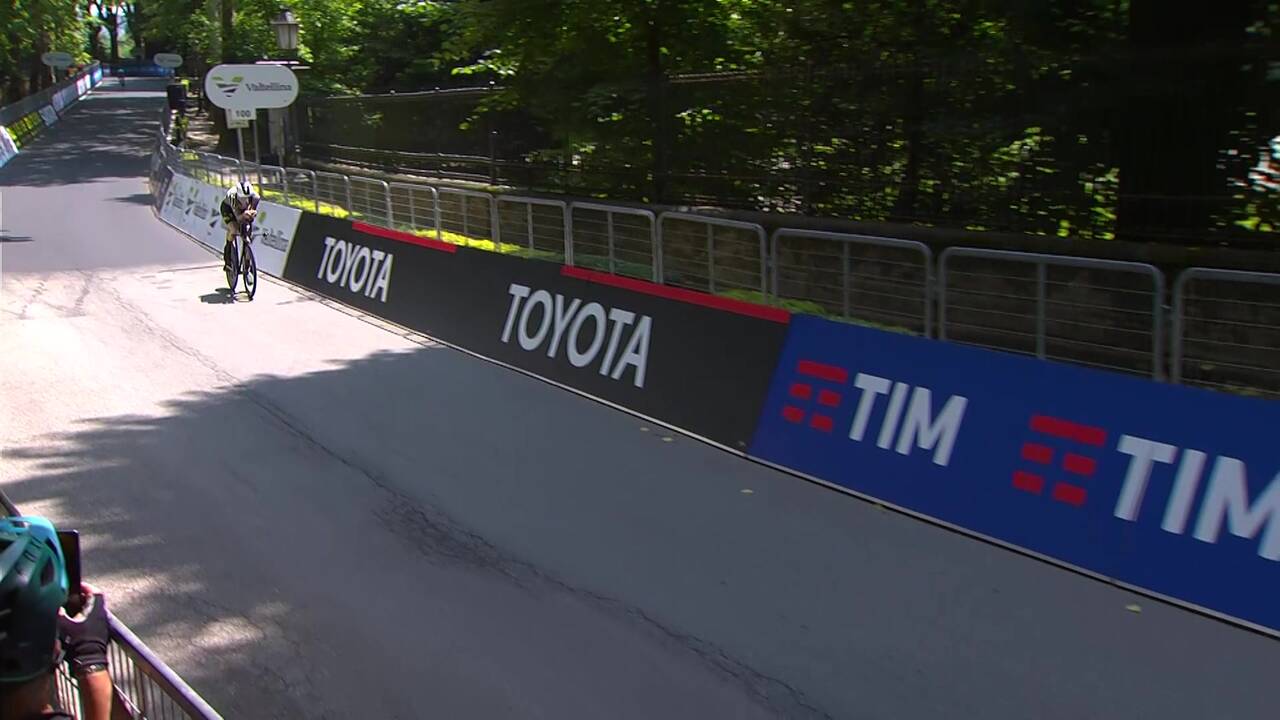
Giro Next Gen 2023 | Tappa 1 | Highlights
12 Jun 2023

